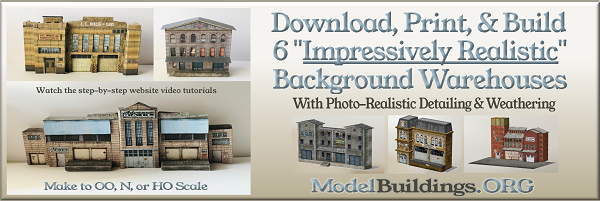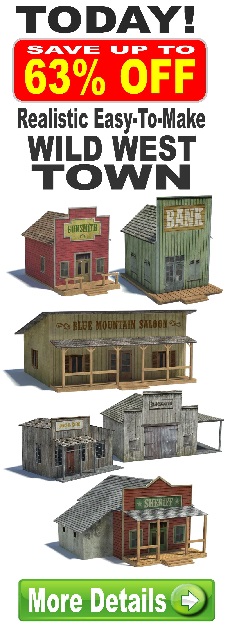Everything on model trains, model railroads, model railways, locomotives, model train layouts, scenery, wiring, DCC and more. Enjoy the world's best hobby... model railroading!
Tunnel Derailments
Ralph is experiencing derailment problems and asks readers for advice:
“I have a curve in a tunnel. When the train runs right to left on the track all is well. But when I run the train left to right I obtain a derailment. I have manually changed the curvature a little. The area is somewhat accessible. There is no problem either way with small engines just with the longer engines.”
Comment below.
11 Responses to Tunnel Derailments
Leave a Reply
















I had that problem about 15 years ago. What I did was put a series of rerailer track throughout the hidden areas.
sometimes adding a little weight to the offending engine / carriage works
Ralph, it sounds like you may be using too small a radius track inside the tunnel. This could make an engine derail in one direction sometimes.
You can also try cleaning the track using an old toothbrush and liquid track cleaner as made by Bachmann or Life-Like. If the tunnel is very long or you can’t reach inside it, tape another old toothbrush onto the back (non-brush) end of the first one.
It sounds to me that the engine has a long wheel base of there may be a section of track where the rail joint is not connected correctly. Check it out.
Pls check the level and the distance between two rails in the curves (radius).check all the joints inside the rail as well as top. you may use tooth pick for that. I use magnifier glass to check the joints and feel with finger.
Try with long wheel base and short wheel base engines and carriage.
I had that problem (in Z scale) though not in a tunnel. On investigation I found that one fishplate had gone under the adjoining rail. Fine in one direction but caused trouble with some locos when they had to ‘step up’.
I would say from your description that the curve is to tight for larger engines and coaches although fine for smaller engines with a shorter wheel base. the solution is to change the curve or just run the smaller locos. Hope this helps.
Sounds like part of the curve is too tight, probably a kink or just a small section is too tight, If you used flexi track re lay with set track to a set radius, I found engines will get round 18″ radius set track in OO /HO that I can’t get around 24″ flexi curves because I’m not acurate enough at track laying and the flexi goes tight to gauge when curved, especially that nasty Italian stuff, the Peco is much better.
A trick I used on my sons railway was to take readily available 18″ radius curves and ease them out to 21″ even 24″ radius , I cut the webs and trimmed the rails just like flexi track, except they don’t try to straighten themselves out all the time.
Awesome comment, David Broad. I’ve used the cutting of set radius track, as you explained, a couple of times and it worked perfectly.
From your description, you are having derailments with your six axle locomotives in one direction. I suggest checking your track for any segments or track joinings that maybe out of alignmen: track connectors, uneven rails (one rail higher than the other rail), or any uneven track going through the tunnel. The smallest amout of out-of-alignment will cause six axle engines to derail because of the larger wheel base.If you run the engine very slowly, you will be able to determine what is causing the derailment. Good Luck!
Appreciate I have come to this a little late in the feed but a similar problem I had seemed to relate to the length of the train (loco and wagons combined) and the length of the approach that is straight.
It related to the drag that the train experiences on the curve – if one way the whole train is on a curve then there is more drag on the loco/wheel set than if say half of the train was on a straight approach.
The cure boiled down to ensuring the wagon/coaching stock was free running and/or making the train shorter (i.e. less wagons).
Hope this makes sense.